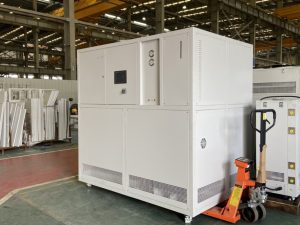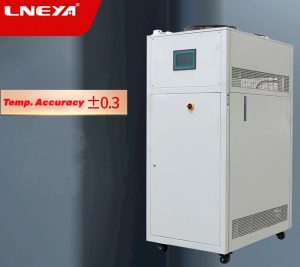L'uso della valvola di espansione elettronica nei sistemi di refrigerazione a bassa temperatura
In the low temperature chiller system, the electronic expansion valve plays a key role in controlling the operating power of the system in cooperation with compressors, condensers, evaporators, water-cooled screw chillers, air-cooled screw chillers, cryogenic screw chillers, central air-conditioning units, chillers, water-cooled chillers and air-cooled chillers. Its operation situation will determine the practical refrigeration ability and control accuracy of the low temperature chiller system. However, most chillers use electronic expansion valves or thermal expansion valves as a saving arrangement of system. Controlling the superheat of the compressor inlet is most primary. However, due to the positioning in this planning, the electronic expansion valve can not fully exert the control efficacy of system accuracy. During the operation of basso temperature sistema di refrigerazione, control can complete the optimal output control of system cooling capacity, but as is always the case, it can’t be completely exerted to output control system cooling capacity when the temperature is close to the equipment policy. the accuracy of the system can’t be ensured. Although the precision has been improved when using the method of PID control, as a whole, there is still a lot of room for improvement.
Equipment and Planning of Electronic Expansion Valve
In the low temperature chiller system, the electronic expansion valve is generally used as a general saving arrangement to control the superheat of compressor. It is usually equipped between the evaporator inlet and the condenser outlet. According to the superheat of compressor inlet, the size of the adjustable opening is analyzed and judged in real time, and the optimal control of superheat is completed to reach the optimal output of system cooling capacity. However, when the control needs to be accurate , due to the constraints of superheat, the best ability of refrigeration output control is often not brought into play, and the system temperature control accuracy is poor.
Raccomandazioni correlate
-
Applicazione delle apparecchiature di circolazione a controllo uniforme della temperatura nel processo di distillazione
1753Distillazione raffreddamento riscaldamento applicazione
Visualizza dettagli -
What are the characteristics and application scope of cryogenic refrigeration circulators?
1765Specializing in the development and production of low-temperature refrigeration circulators, the refrigeration temperature range is from -120 degrees to -30 degrees. Today, let us take a look at the characteristics of low-temperature refrigeration...
Visualizza dettagli -
La necessità di una macchina di prova ad alta e bassa temperatura per i chip a semiconduttore
1548Il rapido sviluppo dell'industria dei chip è evidente a tutti. Anche la macchina di prova per chip a semiconduttore LNEYA ad alta e bassa temperatura è stata continuamente sviluppata insieme allo sviluppo dell'industria dei chip. Ci sono decine di migliaia di...
Visualizza dettagli -
Danno da polvere al sistema di controllo della temperatura dell'olio termico del reattore
1382La polvere nel lavoro quotidiano avrà anche un certo impatto sul funzionamento del circuito stampato del sistema di controllo della temperatura dell'olio termico del reattore. La polvere è un sistema non uniformemente disperso composto da particelle sospese nell'aria. Proviene principalmente da...
Visualizza dettagli
 Refrigeratori industriali LNEYA Produttore Fornitore
Refrigeratori industriali LNEYA Produttore Fornitore













